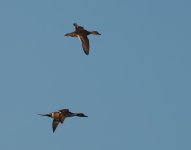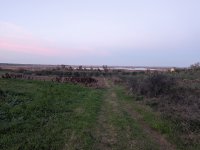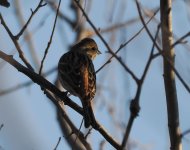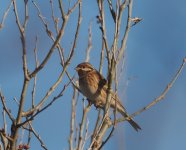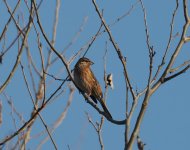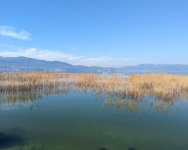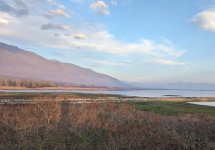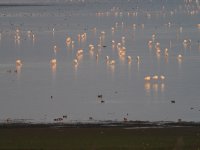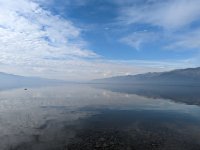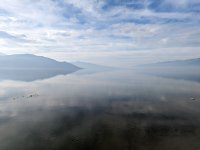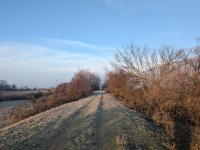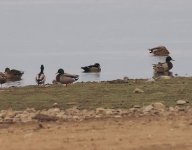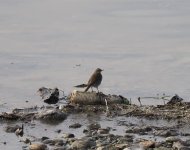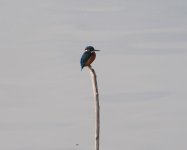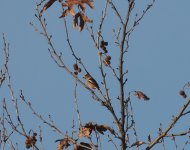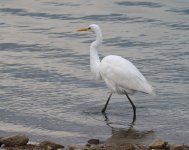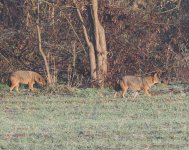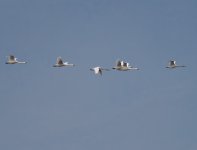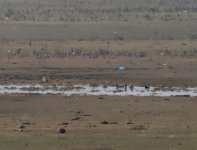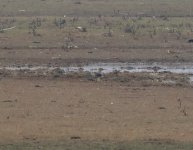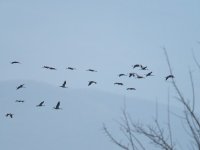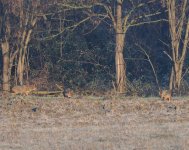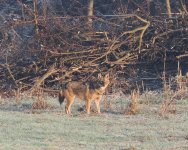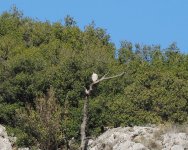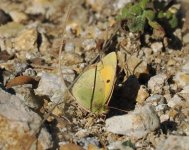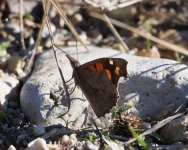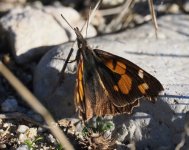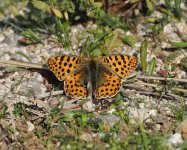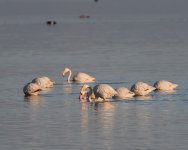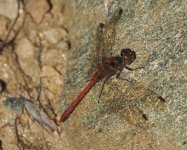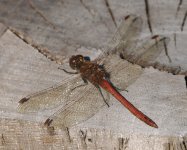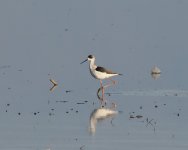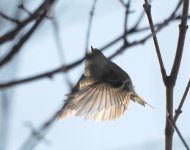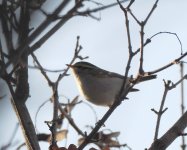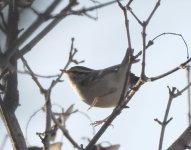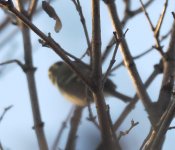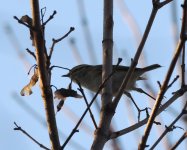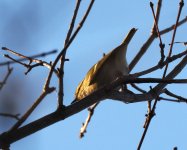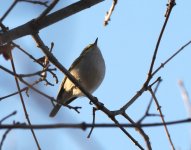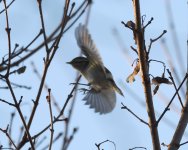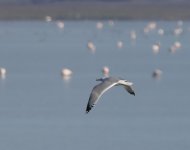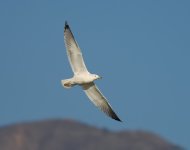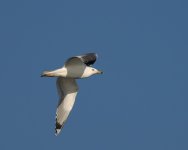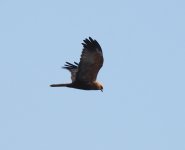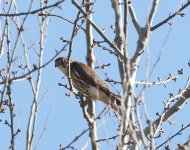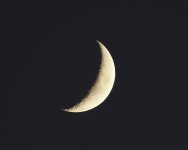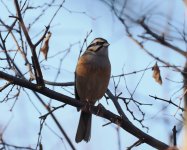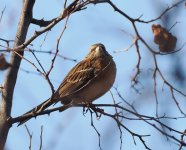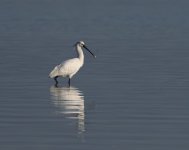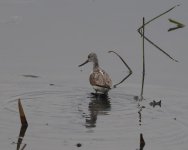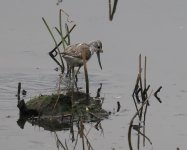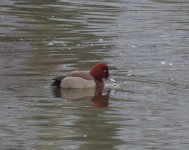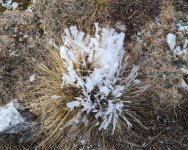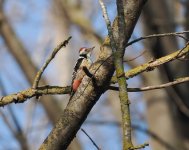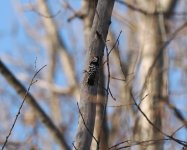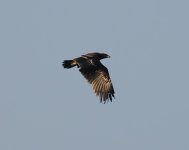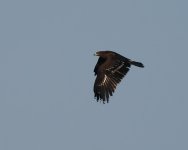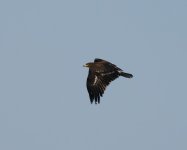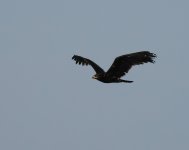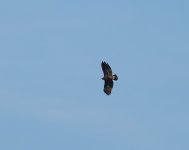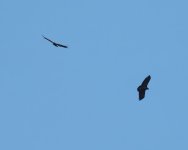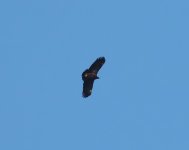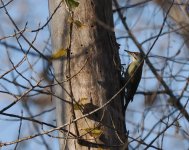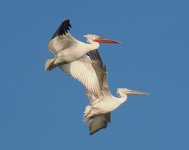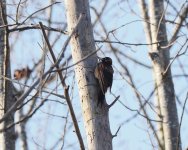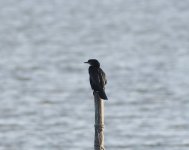
So I'll be making an attempt at doing an 'as I go along' trip report, which isn't something I've done for a while. And used to always peter out when I did them. We'll see how we go.
I'll be in Greece until around 10th January, mostly in the northeast. It's not a country I've visited before and, while there aren't likely to be many lifers, I'm hoping to see a few things I've not often seen before.
I arrived on the evening of 21st at Athens Airport. On arrival I received a not entirely surprising text to say that my hold luggage hadn't made it all the way with me. Not a great start. Anyway, I went through immigration and picked up a hire car before heading off a short distance to Artemida to spend the night.
I was up early this morning, greeted by cool temperatures but bright, clear skies and lovely views across the bay. I spent an hour or so looking around nearby Artemis Lagoon. There weren't huge numbers of birds but the sounds of Sardinian Warblers and Cetti's Warblers made me feel like I'd definitely travelled south. A few ducks were on the small lagoon, including a lovely pair of Pintail. A Black Redstart topped a telegraph post near the entrance.
I then headed over to the airport, where my bag had finally arrived. Fully equipped, I headed northwards on what's likely to be the longest drive of the trip. It was pretty smooth going once I got out of Athens, aside from the frequent toll booths. My only stop en route was at a rest area for a quick break and lunch. There were a few birds here, including a male Hen Harrier quartering the nearby scrubby hillside, a flyover Serin and a pair of Stonechats.
After nearly five hours driving, I turned off the motorway to the small village of Nea Agathoupoli, where I would be spending the rest of the day and the night. After checking in, I set off for a wander for the last hour or two of the day. The calm waters of the bay soon caught my attention. A group of Dalmatian Pelicans were loafing a few hundred metres away, accompanied by several Pygmy Cormorants. Scattered across the water were small groups of Black-necked Grebes and a few Red-breasted Mergansers. Along the shoreline were an Avocet, a few Grey Plovers and a Spoonbill. In the distance, perhaps 1000 Greater Flamingos were swarming. Proper Mediterranean birding.
I wandered the fairly short distance along the path through the marshes, hearing Cetti's Warblers and Water Rails as I went. The path took me to the very fancy looking bird tower, no doubt constructed to attract birding tourists. It was, however, closed when this birding tourist visited. I could obtain similar views from the nearby hillside, albeit from a bit further back. I could see why they put a bird tower here. There really were a lot of birds. The tower overlooks a reed-fringed lagoon that was probably more ducks than water. I'd estimate between 5000-10000 Teal, along with smaller numbers of a variety of other species (see picture). A lovely group of four Bewick's Swans arrived in for a short time. An Osprey loafed on the saltmarsh. Across the reedbeds, several Marsh Harriers drifted and Buzzards perched atop the willows. Many birds were gathering to roost: hundreds of Magpies and Jackdaws, flocks of finches, a few Corn Buntings and, perhaps inevitably, several thousand Starlings. As dusk came, two male Hen Harriers appeared, probably also looking for somewhere to spend the night.
I'll be in Greece until around 10th January, mostly in the northeast. It's not a country I've visited before and, while there aren't likely to be many lifers, I'm hoping to see a few things I've not often seen before.
I arrived on the evening of 21st at Athens Airport. On arrival I received a not entirely surprising text to say that my hold luggage hadn't made it all the way with me. Not a great start. Anyway, I went through immigration and picked up a hire car before heading off a short distance to Artemida to spend the night.
I was up early this morning, greeted by cool temperatures but bright, clear skies and lovely views across the bay. I spent an hour or so looking around nearby Artemis Lagoon. There weren't huge numbers of birds but the sounds of Sardinian Warblers and Cetti's Warblers made me feel like I'd definitely travelled south. A few ducks were on the small lagoon, including a lovely pair of Pintail. A Black Redstart topped a telegraph post near the entrance.
I then headed over to the airport, where my bag had finally arrived. Fully equipped, I headed northwards on what's likely to be the longest drive of the trip. It was pretty smooth going once I got out of Athens, aside from the frequent toll booths. My only stop en route was at a rest area for a quick break and lunch. There were a few birds here, including a male Hen Harrier quartering the nearby scrubby hillside, a flyover Serin and a pair of Stonechats.
After nearly five hours driving, I turned off the motorway to the small village of Nea Agathoupoli, where I would be spending the rest of the day and the night. After checking in, I set off for a wander for the last hour or two of the day. The calm waters of the bay soon caught my attention. A group of Dalmatian Pelicans were loafing a few hundred metres away, accompanied by several Pygmy Cormorants. Scattered across the water were small groups of Black-necked Grebes and a few Red-breasted Mergansers. Along the shoreline were an Avocet, a few Grey Plovers and a Spoonbill. In the distance, perhaps 1000 Greater Flamingos were swarming. Proper Mediterranean birding.
I wandered the fairly short distance along the path through the marshes, hearing Cetti's Warblers and Water Rails as I went. The path took me to the very fancy looking bird tower, no doubt constructed to attract birding tourists. It was, however, closed when this birding tourist visited. I could obtain similar views from the nearby hillside, albeit from a bit further back. I could see why they put a bird tower here. There really were a lot of birds. The tower overlooks a reed-fringed lagoon that was probably more ducks than water. I'd estimate between 5000-10000 Teal, along with smaller numbers of a variety of other species (see picture). A lovely group of four Bewick's Swans arrived in for a short time. An Osprey loafed on the saltmarsh. Across the reedbeds, several Marsh Harriers drifted and Buzzards perched atop the willows. Many birds were gathering to roost: hundreds of Magpies and Jackdaws, flocks of finches, a few Corn Buntings and, perhaps inevitably, several thousand Starlings. As dusk came, two male Hen Harriers appeared, probably also looking for somewhere to spend the night.




